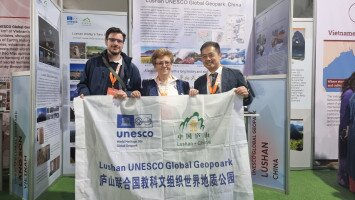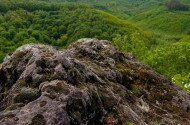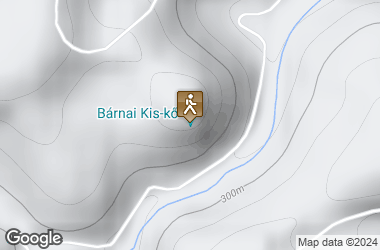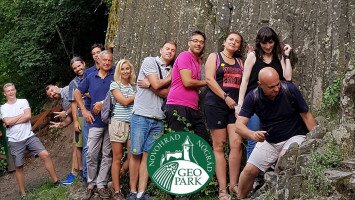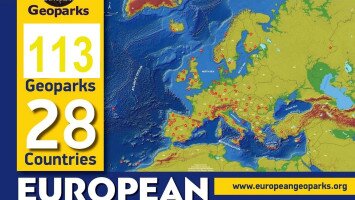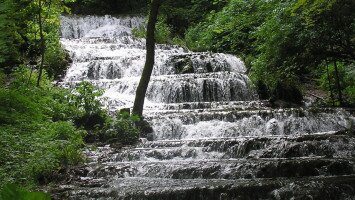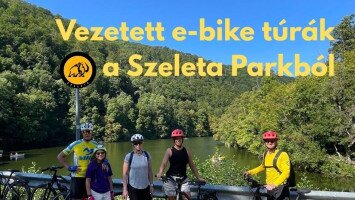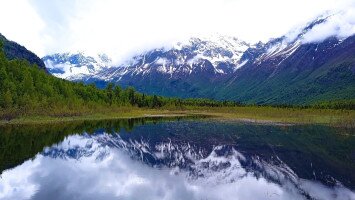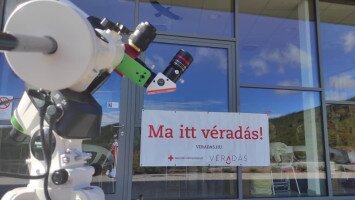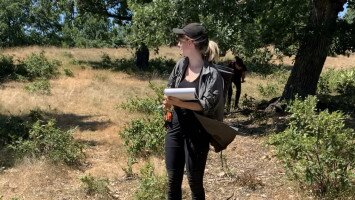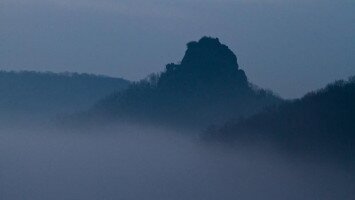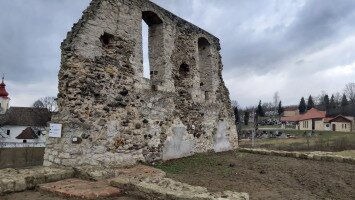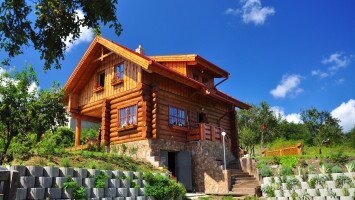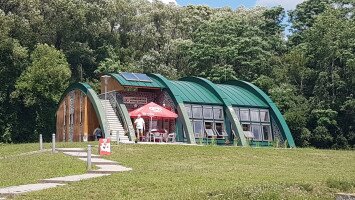Látogatható geosite.
Helyi jelentőségű védett természeti terület
Fekvése, megközelítése
A védett terület említésénél gyakran találkozhatunk a "bárnai Kiskő" elnevezéssel is, holott a terület közigazgatásilag Szilaspogonyhoz tartozik. A 379 m magas Kiskő bazaltja a Medves-Ajnácskői bazaltvidék keleti szélén, erdővel borított területen 25-30 méterrel emelkedik ki a környezetből. A Kiskő vulkáni kúpját legegyszerűbben Szilaspogony településtől érhetjük el, a Cikorád-völgyben haladó földúton keresztül északnyugatról, a Kiskő-nyak felől. Jelzett turistaúton Bárna település felől a Kék, majd Kék kereszt jelölésű turistaúton kereshetjük fel.
Keletkezése, felszínalaktani jellemzők
A Kiskő földtani felépítését vizsgálva számos különleges felfedezést tehetünk. A kúp alsó kétharmada sárga színű, homok, homokkőrétegekből épül fel, csak a csúcson bukkan elő a vulkáni kőzet. A 20-25 millió éves, 50-100 m mélységű tengerben keletkezett nagy vastagságú homok, homokkő összletére egy sekély tengeri, majd egy szárazföldi folyóvizi rétegsornak kellene következnie. A Kiskő környékén ezek hiányoznak, vagy az erózió lepusztította, vagy lokálisan nem fejlődtek ki, vagy a fedettség miatt nem kerültek felszínre.
A vulkáni keletkezésű, ún. „alsóriolittufa” a Kiskő csúcsánál valószínűleg közvetlenül a glaukonitos homokkőre települ, ennek foszlányai ismertek. A riolittufára nem következnek a környékben jól ismert széntelepek. Több, mint 15 millió év üledékei és vulkáni képződményei hiányoznak a Kiskőről. Valószínűleg ezek kialakultak, de a bazaltvulkanizmust megelőző szárazföldi szakaszban az erózió áldozatai lettek. A bazaltvulkanizmus 2,4 millió éve zajlott le több szakaszban. Első szakaszban a kirobbant kürtőn keresztül bazalttufa kerület a felszínre, ebből a kürtőkörül egy tufasánc alakulhatott ki. A második szakaszban a központi kürtőn keresztül egyre nagyobb méretű, ún. bombák és tömbök kerültek a felszínre, ezek a jelenlegi csúcs anyagát alkotják. A vulkáni működés utolsó szakaszában ezt egy bazalttelér törte át.
Növény-és állatvilága
A szikla és környező erdői az alábbi növényeknek nyújtanak élőhelyet. A molyhos-tölgyes bokorerdőkben, szárazabb cseres-kocsánytalan tölgyesekben bazalt alapkőzeten is igen elterjedt a pukkanó dudafürt (Colutea arborescens). Elszigetelt populációkban van jelen az ujjas keltikének (Corydalis solida). Szurdokerdőkben valójában oligocén kori rétegek omladékain a berki aggófű (Senecio hercynicus) fordul elő. Tölgyesekben, bükkösökben szórványosan a kardos madársisak (Cephalanthera longifolia) és a kislevelű nőszőfű (Epipactis microphylla) is megtalálható. Molyhos tölgyesekben, cseres-kocsánytalan tölgyesekben szórványosan felfedezhető a sárgás sás (Carex michelii). A területen igen kicsiny, fragmentális populációi élnek a délies kitettségű oldalak bazalt váztalajain a hegyi árvalányhajnak (Stipa pennata). A kétlevelű sarkvirág (Platanthera bifolia), a réti szegfű (Dianthus deltoides) és a bársonyos kakukkszegfű (Lychnis coronaria) példányait is megtalálhatjuk a területen.
A sziklacsúcs közelében a védett kardoslepke (Iphiclides podalirius) és fecskefarkú lepke (Papilio machaon) több példányát láthatjuk repülni, az idősebb tölgyfák a szarvasbogár (Lucanus cervus)számára nyújtanak ideális élőhelyet, ezen faj ritka változata az ab. capreolousis megtalálható a területen.
Látnivalók
A Kiskő leglátványosabb és legizgalmasabb része a bazaltban kialakult barlangja. A csúcsról nyílik egy „természetes” bejárata, amely méretét tekintve a barlangüreggel együtt egy 14 m-es akna. Továbbá van egy mesterségesen kialakított vízszintes tárója is. A barlang keletkezésére vonatkozóan több magyarázat is született. Korábban a bazaltban megrekedt gázhólyaggal, később a tektonikai mozgások hatására történő kialakulással magyarázták. A barlangról a legkorábbi írott emlék 1865-ből származik. A monda szerint ürege „kincsrejtő”. A néphagyomány szerint törökök lakták. Ez a szóbeszéd nem hagyta nyugodni a Tarna-völgy birtokosát, Kemény Gejzát. 1909-1910 táján három pogonyi lakossal a kemény bazaltba egy közel 10 m hosszú, vízszintes tárót vágatott. Kincset azonban nem talált. További három mesterséges táróról vannak adatok a területen, amik valószínűleg szénkutatási szándékkal kerültek kialakításra.
